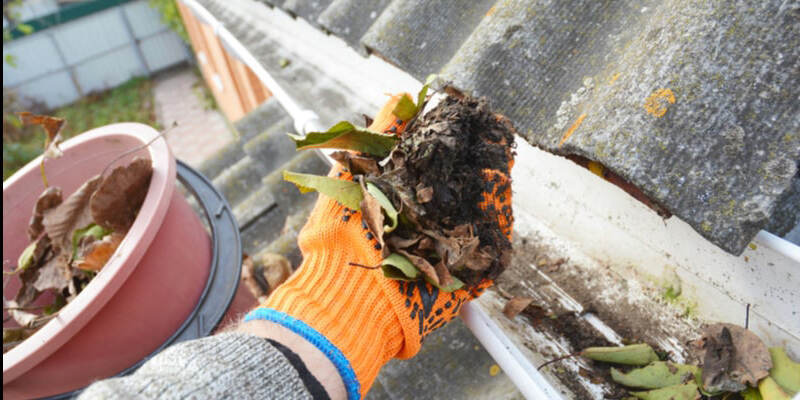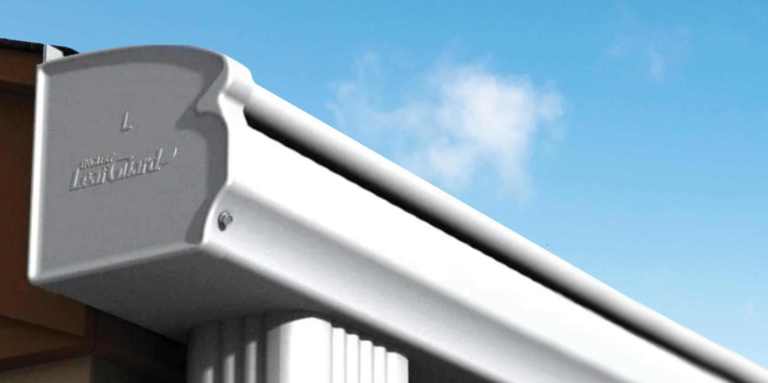Roof gutters are a pivotal part of your building’s structure and are responsible for effective water management. Gutters take rainwater away from the building to prevent it from causing damage. Roof gutters are fixed along the edge of your roof and help to protect the roof, walls, windows, and foundations from excess moisture and potential water-related problems.
Gutters are typically installed at a slight downward slope to allow water to flow freely towards downspouts or drains – the downspout being the vertical pipe attached to the gutters. The downspout then carries the water to the ground level or into an underground drainage system.
Regular maintenance is critical to ensuring a blockage-free and functioning gutter system.
What is a gutter made of?
Today, the most commonly used material for a house gutter system is aluminum. Rain gutter systems available include:
- Aluminum – Aluminum is one of the most popular materials for a roof gutter, thanks to it being strong yet lightweight. Aluminum gutters come in various colors, meaning they can blend nicely with the exterior of the building.
- Wood – This style of house gutter can look the part. However, cedar is the best option when choosing which type, thanks to its ability to withstand moisture for longer. Decay is always possible with wood gutters, so it’s worth considering if they’re the best option.
- Copper – This material is heavy but doesn’t rust and is long-lasting. It can be more expensive to invest in.
- Steel – is a solid and durable option that can rust over time. So, while they may serve you well in severe winters, these house gutters may need to be replaced more often than other materials.
- Vinyl – Although it comes with a lower price tag than its metal counterparts, vinyl can be weaker.
What is the difference between a seamless and sectional roof gutter?
With a roof gutter, you can choose seamless or sectional systems. Seamless is a type of gutter system where it is all made of one continuous piece of gutter. This means there are no joints, which can prevent water from finding its way into small gaps and reduce the risk of leaks.
As the name suggests, sectional gutters come in sections, which are joined together at seams. While these gutters can often be free of any problems for years, one of their drawbacks is that any joint provides a risk of leaks and water finding a way through.
Any gutter, leaves, twigs, and debris can be trapped in the system. This can impact water flow and lead to sagging, leaks, and possibly damage your building’s structure. Homeowners tend to purchase filters and covers to protect open roof gutters.
These extras, however, aren’t required with a Leafguard system.
Why are gutters important?
Roof gutters are essential. Without them, damage can occur to a property, such as erosion, water damage, mold growth, and more.
A high-quality gutter system can help prevent costly repairs to the house and the gutter itself. A low-quality house gutter could be just as ineffective as not having one at all. They can be susceptible to leaks and cracks, ultimately damaging the building and roof.
With a Leafguard gutter system, its effective one-piece design offers a clog-free guarantee and ultimate durability – perfect for ensuring water is drawn away from your building and blockages are minimized or eliminated.
How to maintain my gutter system
As with anything, proper maintenance will promote longevity. Maintaining the standard of your roof gutter will ensure it lasts longer and keep it working to the best of its ability – reducing damage to the building it’s attached to.
To maintain your gutters, you’ll need:
- A ladder – to reach those high gutters
- Outdoor gloves – to protect your hands from anything that needs scooping out of the gutter
- Wet/dry vacuum – can make it easy to remove leaves and debris
- Cleaners and water – to clean and polish the gutter.
Before you start cleaning, you’ll also want to take some time to assess any risks and ensure you’re confident that you can safely clean your gutters without causing injury to yourself or others.
Start at one end and work your way around. Use handheld tools that allow you to get into small spaces and have a bucket to hand to store any twigs and debris you collect. Only clean the areas you can easily reach from where your ladder is, and be sure to never over-stretch to reduce the chance of you falling.
Keeping your gutters clear and clean will allow for maximum water flow, and if you can’t clean them yourself, get a professional to come and clean them. You should aim to clean your gutter at least twice a year. But this will vary depending on the weather conditions and how much foliage you have around the building.
How Leafguard’s gutter system works
Leafguard’s gutter solution is formed from a single piece of aluminum with a built-in hood designed to keep leaves and debris out while allowing water to flow freely. Its hood is an integral part of the gutter itself and is not an add-on.
Leafguard gutters have an unobtrusive, sleek design that complements the style of any house. They come in various colors and feature an exclusive ScratchGuard® paint finish that won’t chip, peel or crack. Leafguard’s unique gutter system is reliable and comes with a lifetime, clog-free guarantee – or we will clean and fix it for free.
Learn more about how the Leafguard gutter system works and how Leafguard compares to other gutter systems.
Get a Free Estimate Today.


